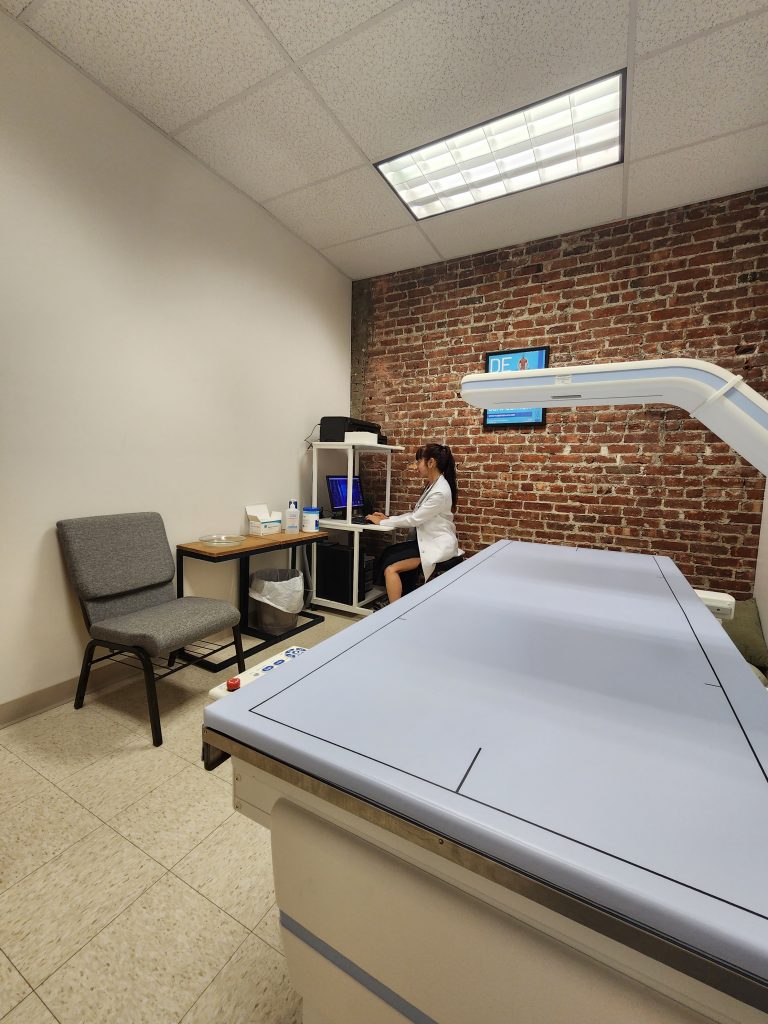DXA (or DEXA) stands for Dual-energy X-ray Absorptiometry. It is a device that uses 2 X-ray beams of differing energy levels. This allows it to distinguish between soft tissue and bone absorption of the X-rays. Its original use was to determine bone density and it is also now used to evaluate body composition.

With body composition, DXA allows for the determination of Fat Mass (and compartment) and Lean Mass.
On the DXA scan, Lean Mass includes bone, muscle, water, organs and tissue. Since we can also determine Bone Mineral Content (BMC) with DXA, we are able to approximate muscle mass (plus water) and follow sequential changes in this compartment.
A typical DXA scan for body composition is non-invasive, takes 7 minutes and exposes your body to less than one day’s natural ambient radiation. This allows us to use the DXA on pediatric populations and also to do multiple scans in a year to track a patient’s progress.
